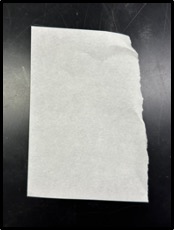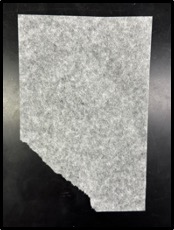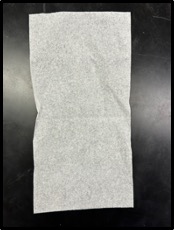intro to microscopy
1/53
There's no tags or description
Looks like no tags are added yet.
Name | Mastery | Learn | Test | Matching | Spaced |
|---|
No study sessions yet.
54 Terms
eyepiece
1
objective lense
3
diaphragm and condenser
8
The mechanical stage and the specimen stage are identified by which two numbers?
6
9
illuminator
7
course adjustment and course focus
4
fine focus or fine adjustment
5
rotating turret
2
nose piece
2
occular lense
1
In bright-field microscopy, stains are used to increase
contrast
Which objective lens is most likely to require the use of immersion oil?
100x
The course adjustment knob should NEVER be used when using which two objective lenses?
40x and 100x
Immersion oil reduces ___.
refraction
What is the total magnification if a specimen is viewed through a 10x ocular lense and a 4x objective lense?
40
10×4
What is the total magnification if a specimen is viewed through a 5x ocular lense and a 10x objective lense?
50
5×10

Click on the image produced by a bright field microscope
bright purple

Click on the image produced by a bright field microscope
dark purple
Given that resolving power, the minimum distance that two points can be resolved, is calculated as r, what is the resolving power when using blue light (λ = 452 nanometers), the numerical aperture of the condenser is 1.25, and the numerical aperture of the objective lens is 0.20?
Report your answer in nanometers rounded to the nearest tenth (one decimal place). For example, if the answer is 125.26 nanometers, it would be rounded to one decimal place and reported as 125.3.
311.7
Given that resolving power, the minimum distance that two points can be resolved. is calculated as r, what is the resolving power when yellow light (λ = 581 nanometers) the numerical aperture of the condenser is 1.25, and the numerical aperture of the objective lens is 0.45?
Report your answer in nanometers rounded to the nearest tenth (one decimal place). For example, if the answer is 125.26 nanometers, it would be rounded to one decimal place and reported as 125.3
341.8
Given that resolving power, the minimum distance that two points can be resolved, is calculated as r, what is the resolving power when yellow light (λ = 573 nanometers), the numerical aperture of the condenser is 1.25, and the numerical aperture of the objective lens is 0.48?
Report your answer in micrometers rounded to the nearest thousandth (3 decimal places). For example, an answer of 125.6 nanometers would be converted to 0.1256 micrometers, rounded to 3 decimal places, and reported as 0.126
The formula for resolution is below. The formula does not include the conversion to micrometers.
0.331
Given that resolving power,the minimum distance that two points can be resolved, is calculated as r, what is the resolving power when blue light (λ = 473 nanometers), the numerical aperture of the condenser is 1.25, and the numerical aperture of the objective lens is 0.49?
Report your answer in micrometers rounded to the nearest thousandth (three decimal places).
For example, 125.6 nanometers would be converted to 0.1256 micrometers, rounded to 3 decimal places, and reported as 0.126 .
The formula for resolution is below. The formula does not include the conversion to micrometers.
0.272
As the wavelength of light
Correct answer:
decreases
the effect of diffraction is reduced.
As the size of the opening the light passes through
Correct answer:
increases
the effect of diffraction is reduced.
s
The numerical aperture of the condenser lens should be
Correct answer:
greater than or equal to
the numerical aperture of the objective lens.
s
Which two things affect the numerical aperture of a lens?
refractive index
diameter of the lens
Which kind of light has the longest wavelength?
infrared
The starburst effect or halo of light observed around a streetlamp at night is a product of ____.
diffraction
Correctly order the steps for focusing the microscope based on the directions provided in the virtual lab manual.1
Plug in the microscope and flip the on switch to the on position.
Correctly order the steps for focusing the microscope based on the directions provided in the virtual lab manual.2
Place the specimen slide on the stage, with the arm clip holding it in place.
Correctly order the steps for focusing the microscope based on the directions provided in the virtual lab manual.3
Put the 4x objective lens in place (above the slide) by rotating the turret.
Correctly order the steps for focusing the microscope based on the directions provided in the virtual lab manual.4
Using the course adjustment knob, raise the stage all the way up.
Correctly order the steps for focusing the microscope based on the directions provided in the virtual lab manual.5
While looking through the ocular lenses, slowly lower the stage using the course adjustment knob, until the view into focus (it will look like a fuzzy TV just before it is in focus).
Correctly order the steps for focusing the microscope based on the directions provided in the virtual lab manual.6
Switch to the 10x objective lens. Use the course adjustment knob to bring the picture back into focus. Only minimal adjustment should be needed because most microscopes have parafocal objective lenses–the objective lenses all have the same focal length.
Correctly order the steps for focusing the microscope based on the directions provided in the virtual lab manual.7
Switch to the 40x objective lens
ONCE THE 40X OBJECTIVE LENS IS IN PLACE YOU MAY NOT USE THE COURSE ADJUSTMENT KNOB ANYMORE
Correctly order the steps for focusing the microscope based on the directions provided in the virtual lab manual.8
Using the fine adjustment knob, slowly adjust until the picture is in focus again.
Correctly order the steps for focusing the microscope based on the directions provided in the virtual lab manual.9
Move the 100x objective lens HALF way into place, the 40x and 100x objectives should be straddling the sample and light.
Correctly order the steps for focusing the microscope based on the directions provided in the virtual lab manual.10
Add a drop of immersion oil to the slide, right on top of your sample
Correctly order the steps for focusing the microscope based on the directions provided in the virtual lab manual.11
Once the oil has been added you can push the 100x objective lens fully into place.
Correctly order the steps for focusing the microscope based on the directions provided in the virtual lab manual.12
ONCE THE 100X OBJECTIVE IS IN PLACE YOU MAY NOT GO BACKWARDS TO THE 40X LENS
Correctly order the steps for focusing the microscope based on the directions provided in the virtual lab manual.13
Fine adjust until the sample comes into focus.
Correctly order the steps for focusing the microscope based on the directions provided in the virtual lab manual.14
Clean up - throw slide in glass disposal box and gently blot the objective lens with lens paper
Which paper product would you use to blot excess water or dye from a microscope slide?

Which paper product would you use to gently blot immersion oil off the 100x objective?

Which paper product would you use to wipe a delicate piece of equipment like the balances in lab, or wipe down a test tube, or wipe the lid of a Petri dish?

Which paper product would you use to clean up after a spill or to wipe down the lab bench with 70% ethanol?

Click on the photo of a paper towel.
brown one
Click on the photo of a kimwipe.
white nonripped one
Click on the photo of a piece of lens paper.
grainy one
Click on the photo of a piece of bibulous paper.
brightest white one slightly ripped
When observed under the microscope, the letter e has the orientation depicted in the photo below.

The volume of a sphere is given by the formula .
If a coccus shaped bacteria has a radius of r = 0.48micrometers, what is the volume of the bacterium?
0.46
The surface area of a sphere is given by the equation . If a coccus bacteria has the radius r = 0.41, what will its surface area be?
2.11
What is the surface area to volume ratio (SA/V) of a coccus with the radius r = 0.87?
3.45
A bacillus-shaped bacterium is shaped like a cylinder with half a sphere attached to each end as in the figure below.
The height of the cell is equal to the diameter of the cylinder and the sphere. The width of the cell is equal to the length of the cylinder plus the diameter of the spheres. The radius for the cylinder and the sphere will be equal to 0.5*h. The length of the cylinder will be equal to w-h.
The surface area of a bacillus is
The volume of a bacillus is
Given a bacillus with a height of 1.96 and a width of 7.69, what is its surface area to volume ratio?
2.51